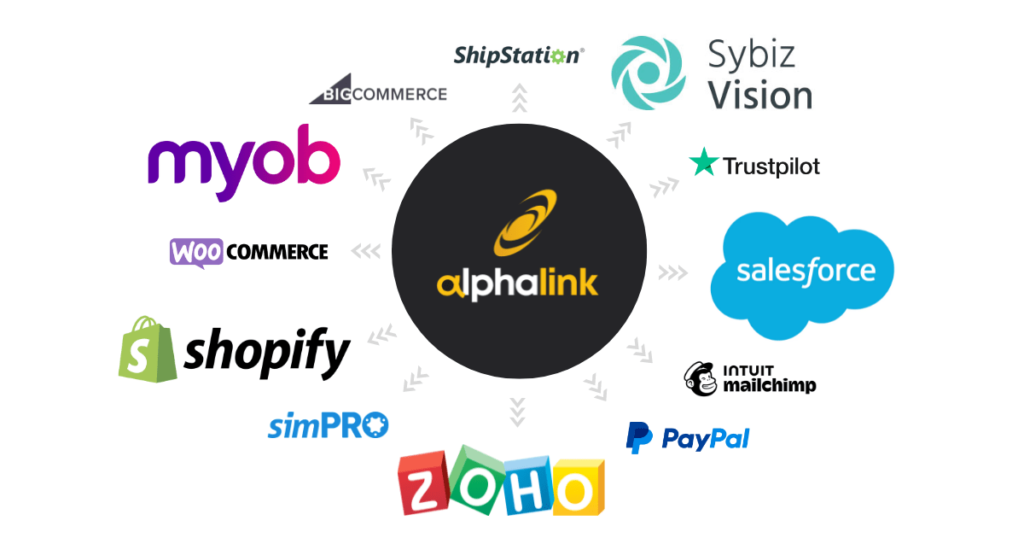In today’s digital world, mid-market businesses must find efficient ways to manage data exchange with their partners. Electronic Data Interchange (EDI) offers a solution that allows businesses to automate and standardise transactions, from purchase orders to invoices, directly between systems. This blog will explore EDI’s benefits, types of EDI solutions, and how to choose the best option for your business.
What is EDI?

EDI, or Electronic Data Interchange, is the electronic exchange of business information, such as purchase orders, invoices, and shipping details, between trading partners. With Electronic Data Interchange, information flows seamlessly between ERP systems without manual intervention. This automation streamlines the order-to-cash cycle, increases accuracy, and reduces processing time—critical advantages for companies dealing with high order volumes or complex supply chains.
How Does EDI Work?
Electronic Data Interchange (EDI) enables businesses to exchange standardised data, such as purchase orders and invoices, directly between systems without manual intervention. Here’s a step-by-step breakdown of how EDI typically works:
- Data Preparation: The sending system gathers information, such as order details or invoice data, and organises it according to a specific EDI format. This standardisation is crucial for ensuring both parties can interpret the data accurately.
- Data Translation: The prepared data is then translated into an EDI-specific format, such as XML or ANSI X12, which encodes the information in a way that different systems can understand.
- Transmission: The EDI data is transmitted securely through communication protocols like AS2, FTP, or HTTP, connecting directly with the recipient’s system.
- Data Receipt and Processing: The receiving system captures the EDI data and translates it back into a readable format. This information can then be automatically imported into the relevant system, such as an ERP or CRM, for further processing.
- Confirmation: Acknowledgment or confirmation messages are often sent back to the sender, verifying receipt and successful processing of the data. This ensures transparency and traceability throughout the transaction.
Key Information in an EDI File
Electronic Data Interchange files follow a specific format that standardises the data exchanged between systems. Common data elements in the files include:
- Purchase Order Details: Includes PO numbers, dates, and billing information.
- Shipping Information: Details about shipment dates, addresses, and tracking.
- Line Item Data: Information on quantities, product codes, descriptions, and prices.
The files require translation systems to convert data into formats readable by each party’s ERP software. This ensures accurate information flow and helps businesses stay aligned with partner requirements.
EDI and E-Invoicing Adoption in Australia: Key Statistics and Benefits
In Australia, the adoption of Electronic Data Interchange and e-invoicing has been steadily increasing, driven by the need for efficiency and cost savings. According to the Australian Taxation Office (ATO), over 1.2 billion invoices are exchanged annually in Australia, with approximately 90% still processed manually. Transitioning to e-invoicing can save businesses up to $20 per invoice, highlighting significant potential for cost reduction.
The Australian Government has been proactive in promoting e-invoicing. As part of the Digital Economy Strategy, the government invested $15.3 million to enhance the value of e-invoicing for businesses and increase adoption.
This initiative includes pilots to gain insights into e-invoicing and e-procurement, educational activities to raise business awareness, and collaboration with payment providers to integrate e-invoicing into common payment methods.
Benefits of Integrating Electronic Data Interchange with ERP
EDI integration with an ERP system, like MYOB, offers many benefits that enhance business efficiency:
- Reduced Manual Processing: By automating data exchange, it eliminates the need for manual data entry, saving time and reducing errors.
- Cost Savings: Fewer manual tasks mean lower labor costs, allowing staff to focus on value-adding activities.
- Faster Order Processing: With automated workflows, orders move quickly from initiation to fulfillment, reducing lead times.
- Improved Data Accuracy: Automation ensures data consistency and accuracy, enhancing trust with partners.
- Broader Business Opportunities: Many large companies require suppliers to use electronic data interchange, making it essential for businesses looking to expand their market reach.
Choosing the Right EDI Solution
When selecting the best EDI solution for your business, it’s essential to assess your current needs, transaction volume, and long-term goals. Here are some factors to guide your decision:
- Transaction Volume: High transaction volumes often require a solution that automates data flow to avoid manual entry and reduce error rates.
- Data Integration Needs: The right EDI solution should seamlessly connect with your current systems, including ERP, CRM, and Point-of-Sale (POS) platforms, ensuring smooth data transfer.
- Data Sources and Flexibility: Consider whether the EDI solution can handle various data sources—files, databases, APIs, and more—to meet the diverse needs of your business.
- Customisation and Scalability: A configurable solution allows you to tailor EDI processes to your unique workflows and grow with your business needs.
AlphaLink: A Powerful EDI Solution for Seamless Data Integration

For businesses seeking a powerful, flexible, and fully configurable EDI solution, AlphaLink is an ideal choice. Designed to streamline data exchange, AlphaLink enables automated workflows that align with the factors outlined above.
Here’s how AlphaLink’s EDI functionality supports seamless data management:
- Automated Web Order Imports: AlphaLink connects to web servers to download, validate, and integrate orders directly into ERP systems like Sybiz Vision, MYOB Exo, and MYOB Acumatica, eliminating manual input and ensuring accuracy.
- POS Transaction Integration: It links with POS systems to extract and validate sales data, importing it into your ERP in real time. This reduces discrepancies and keeps your data current.
- CRM to ERP Synchronisation: AlphaLink syncs customer and lead information across your CRM and ERP, maintaining data consistency and enhancing customer management.
AlphaLink also connects to a wide variety of data sources, including files (Excel, CSV, XML, JSON), databases (MS SQL, MySQL), FTP servers, and REST APIs for popular services like PayPal, Stripe, MYOB Acumatica, and more. This flexibility allows AlphaLink to fit into complex data environments, ensuring all relevant business data flows smoothly across systems.
Conclusion
Implementing EDI can revolutionise your business by reducing costs, improving accuracy, and enabling seamless communication with partners. For mid-market companies, integrating EDI with ERP solutions like MYOB is a strategic move toward digital transformation, enhancing both efficiency and competitiveness.
Ready to explore EDI options for your business? Contact our experts at AlphaBiz Solutions to discuss how MYOB integration can simplify your processes and keep your business on track for growth.






